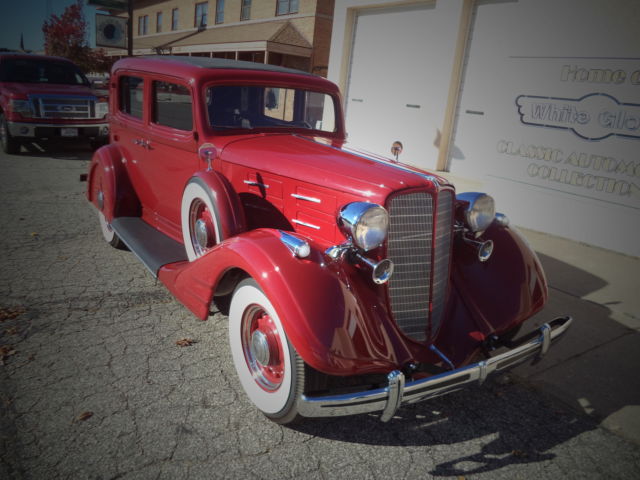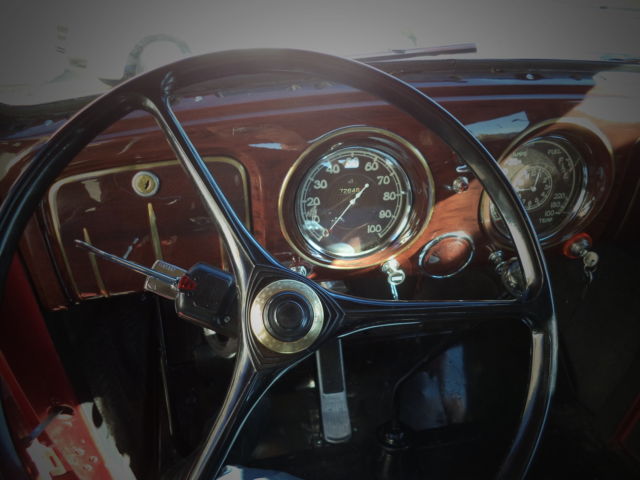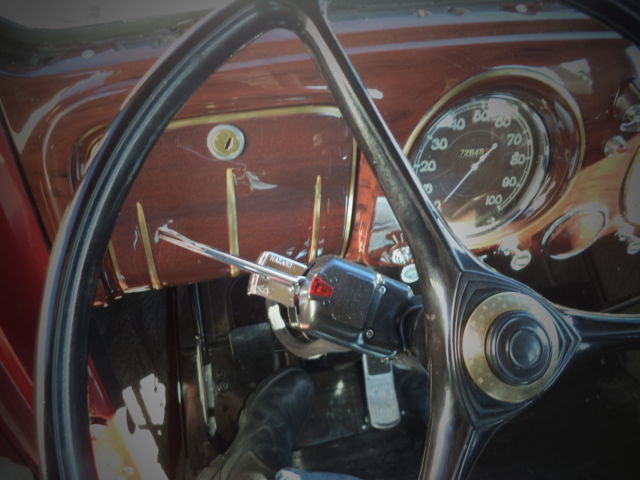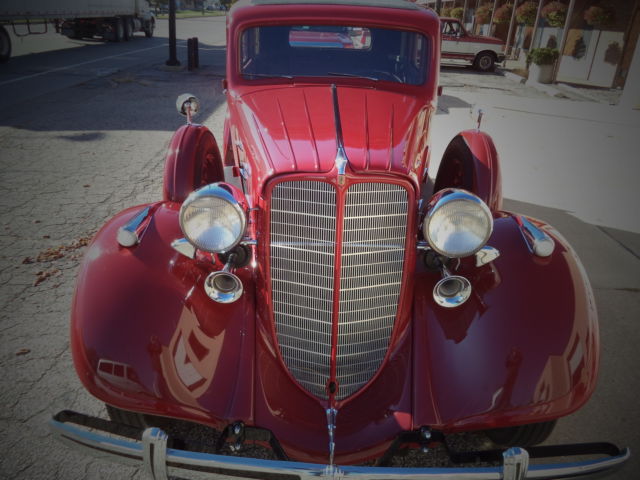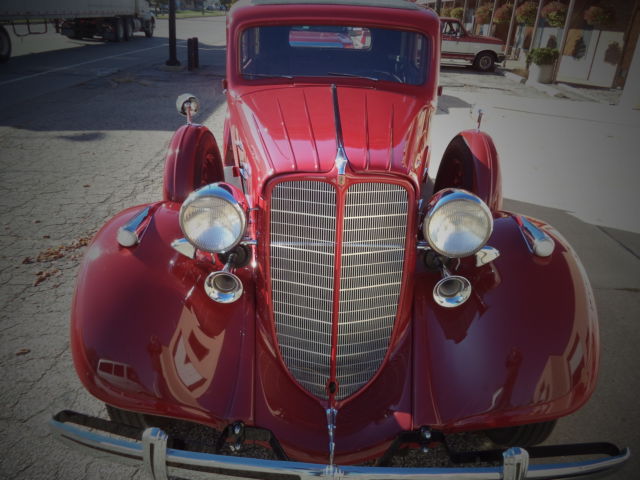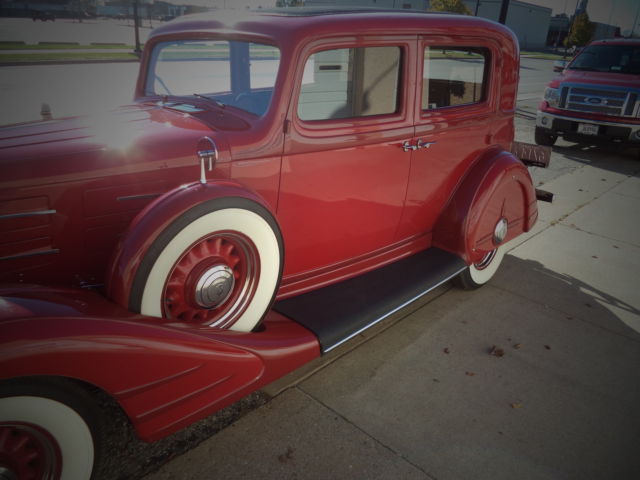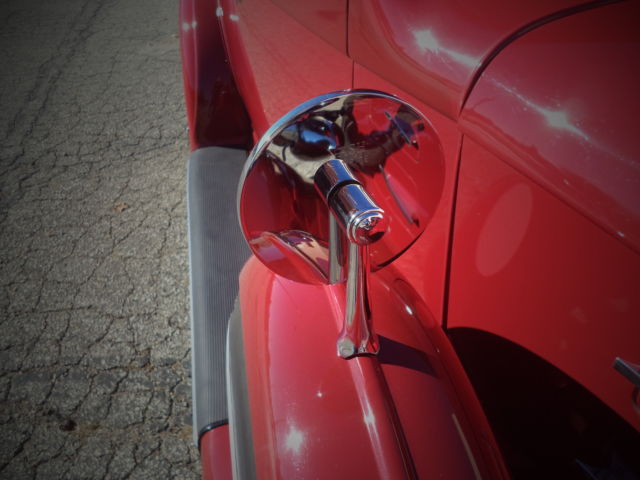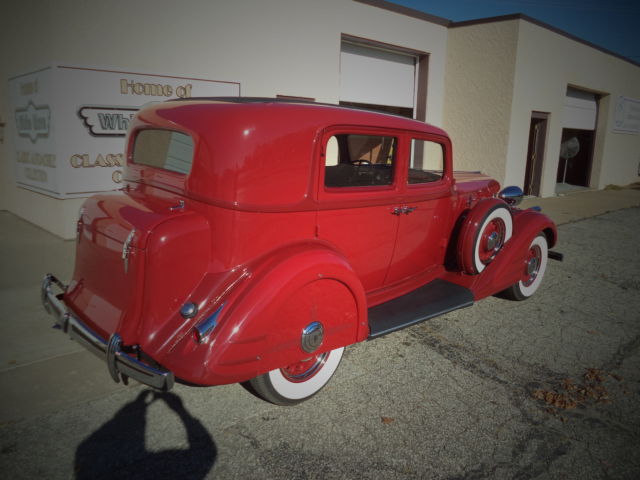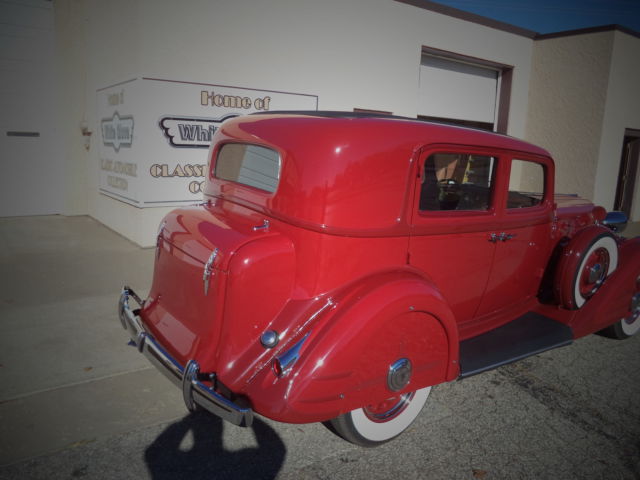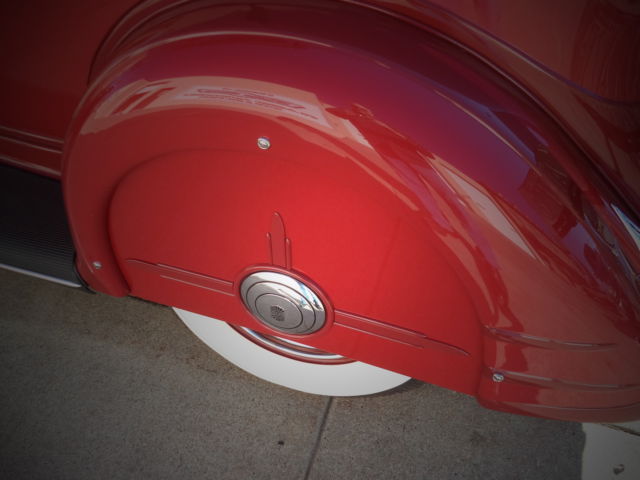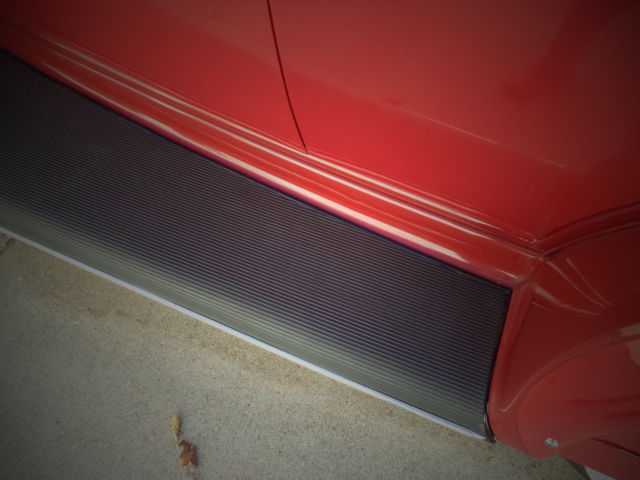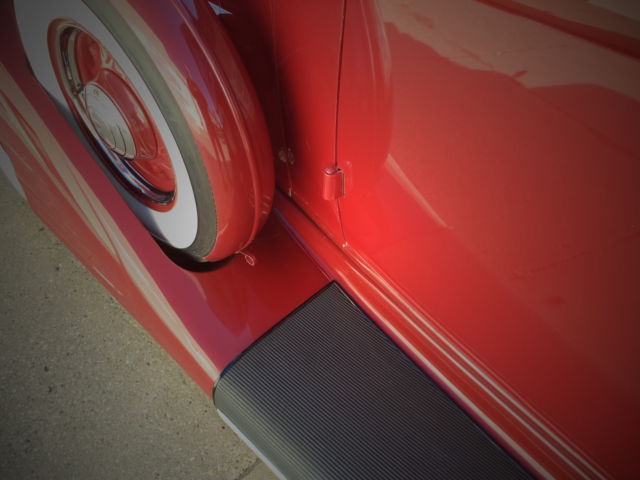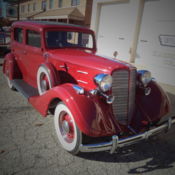1934 Nash Advanced 8 4-Door 5-Passenger Sedan
Technical specifications of Nash Advanced 8 1934
| Price: | - |
|---|---|
| Condition: | Used |
| Item location: | La Crosse, Wisconsin, United States |
| Make: | Nash |
| Model: | Advanced 8 |
| SubModel: | 1280 Sedan |
| Type: | Count Alexis De Sakhnoffsky |
| Year: | 1934 |
| Mileage: | 72,650 |
| VIN: | B71717 |
| Color: | Red |
| Engine size: | Straight 8 260.8 cu. in. |
| Number of cylinders: | 8 |
| Transmission: | Helical 3-Gear |
| Drive type: | RWD |
| Interior color: | Brown |
| Options: | Dual-Downdraft Carburetor, Single-Plate 9-7/8", Semifloating Axel, Spiral-Bevel Differential |
| Vehicle Title: | Clear |
| You are interested? | Contact the seller! |
Description
1934 Nash Advanced 8
Model 1280 4-Door 5-Passenger Sedan
This Nashsports a straight-8, overhead-valve, nine-main-bearing engine. Its 8 cylinders fire on 16 sparkplugs.
For safety, directional signals have been added. This is one of the rarest Nash's in the world.
About White Glove Collection
You can trust in the quality of this 1934 Nash because it comes from White Glove Collection. We're a world-reknown name in the classic car business with customers and clients from Germany to Australia, Bulgaria to Japan, and all cross the United States. Learn more about our showroom and restoration shop as well as our original and reproduction parts business by watching the short video below.
Take a Tour of White Glove Collection
History of the de Sakhnoffski Nash
This singular example of the art deco school was designed byCount Alexis de Sakhnoffski, the Russian-born son ofPrince Vladimir "Sakhnovsky." By the early 1920s,de Sakhnoffski had become known in Europe as a designer of ultra-modern, streamlined sports cars. This put his design skills in high demand by 1929, whende Sakhnoffski moved to America and began working for several Hayes Auto Body customers, including Auburn, Cord, and American Austin. The L-29 Cord body he designed for himself won the Grand Prize at the 1929Monaco Concours d'Eleganceand the Grand Prix d'Honneur at the 1929BeaulieuConcours.
DeSakhnoffsky would soon maintain offices inAtlanta, Chicago, Grand Rapids, Milwaukee, New Canaan (Conn.), New York City, and Philadelphia. His design work extended well outside of automobiles, to related fields such as trailers for Fleetwheels, boats for Feather-Craft, and Chrysler exhibit at 1933 World's Fair; to areas far afield from automobiles, such as interiors for the Earl Carroll Theatre, radios for Emerson,refrigeratorsfor Kelvinator, bicycles for Murray, movie sets for Hal Roach, and advertisements for Revlon.During his lifetime he was awarded 38 US patents and had his illustrations appear inConquete de l'Air,Esquire,L'Equipement Automobile,Motor Trend,Psyche, andSkyways.
As de Sakhnoffski's fame grew through the 1920s, so did the demand for Nash automobiles, with production swelling to 138,137 by 1928. As Nash grew, so did its partners in the coach building business. By 1928, Seamans, a Milwaukee company partly owned by Nash, employed 6,000 workers producing 800 bodies a day.
However, after the stock market crash of 1929 demand for automobiles began to decline. The global economy continued to slow until 1933, a year that saw over 100 auto worker strikes in the United States. Among those strikes was a walk-out of 200 Nash assembly line workers in Kenosha, Wisconsin. In response, Charles W. Nash locked out all 3,000 unionized workers at the Kenosha and Racine plants. After several walkouts, management refusing to comply with union conditions, and eight weeks of mediation, Nash was forced to give his workers a raise of 17 percent, representing one of the first major union victories of the 1930s. It also made for one of the worst financial years in the history of the Nash Motors Company, making 1933 the first year Nash ever lost money.
This made 1934 a year that found Nash and Seamans, its body maker, desperate to sell cars and looking for a new design.The same year, Alexis de Sakhnoffski, having been hired as thenew technical editoratEsquire, where he served until the 1960s, was more broadly-known than ever before. This is what led to Nash andde Sakhnoffski forming an historic partnership that would create one of the most art deco cars of all time. The "Speedstream" body design would transform the look of Nash completely, introducingbullet-shaped headlights, horizontal hood ribs,streamlined accents,rear wheel spats, and built-in luggage trunks with a full beaver-tail rear end.
This incredibly design,however,would last only one year, as the Speedstream styling of 1934 didn't stop the losses at Nash. Instead, the company suffered $1.6 million in additional losses, resulting in yet another redesign in 1935. This design, dubbed the "Aeroform" saw the incredible design of 1934abandonedin favor of a all-steel, one-piece body. This helped to stem Nash's losses, cutting their deficit down to $610,000, making Nash profitable again by 1936, but it would never revisit the design zenith it reached in 1934.
This confluence of historical circumstances, the depression, the economic nadir of 1933, the walkouts, strikes, and lock-outs, and the unlikely rise of a Russian-born aristocrat to the height of international design world would make the 1934 Nash an historical perfect storm. It represents one of the narrowest windows for a design style amongst the largerclassicproducers of automobiles.
That's what makes this car so special, the design was limited to 1934, a single year, and would never happen again. It is truly a moment out of time.
Please call Cord Blomquist at 202-615-0600to discuss the terms of sale. All serious offers will be considered.
